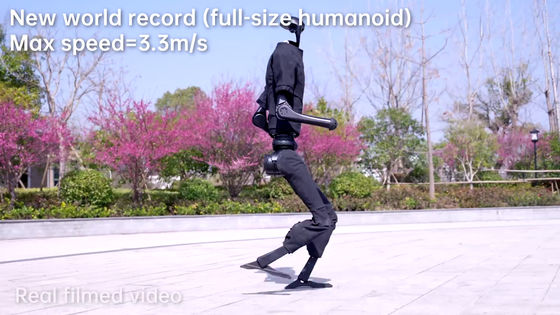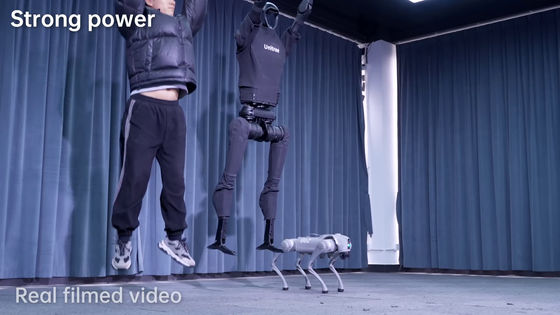'Unitree H1' breaks the world's fastest record for bipedal humanoid robot

' Evolution V3.0 ,' the latest version of the humanoid bipedal robot '
Chinese scientists build world's fastest humanoid robot — but it's not going to win any sprints just yet | Live Science
https://www.livescience.com/technology/robotics/chinese-scientists-build-H1-worlds-fastest-humanoid-robot-but-its-not-going-to-win-any-sprints-just-yet

Unitree H1 is Unitree's first universal humanoid robot, and is touted as China's first ``humanoid robot that can run'' with excellent speed, power, maneuverability, and flexibility. It has stable running performance and highly flexible movement ability, and is able to walk and run autonomously even on complex terrain and environments. Unitree H1 is approximately 1.8 meters tall and weighs 47 kg.
The latest version of Unitree H1, Evolution V3.0, has recorded the world's fastest running speed as a bipedal humanoid robot. The video below shows the Unitree H1 actually recording the world's fastest running speed.
Unitree H1 Breaking humanoid robot speed world record [full-size humanoid] Evolution V3.0 - YouTube
Evolution V3.0 can run at 7.4 miles per hour (3.3 meters per second). According to Unitree, the running speed of Evolution V3.0 could potentially reach 11 miles per hour (5 meters per second).

Full-body exercises like dancing are also possible.

You can also do a vertical jump.

I stumble a little when I land, but I manage to keep my balance. Unitree H1 has three weighted parts on each leg near the waist and one on each knee and ankle, so Unitree H1 can be moved freely just as a human being shifts their weight to maintain their balance. You can find balance.

He also has the dexterity to carry a basket with both hands.

You can freely go up and down narrow stairs.


You can perform advanced movements such as reversing the direction of your body while descending backwards down the stairs without falling over.



The small head-like part on the top of Unitree H1's torso is a sensor array containing sensors and cameras. Unitree H1 uses 3D
Agility Robotics' Cassie can run 100 meters at a speed of 9 miles per hour (4 meters per second), but since this is a robot with only two legs, it does not seem to count as a bipedal humanoid robot. .
BigDog, a quadruped robot developed by Boston Dynamics, runs at 1.7 meters per second, so you can see how fast Unitree H1 runs.

Related Posts:







